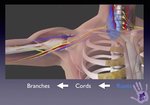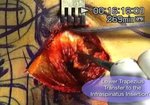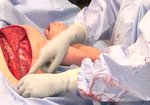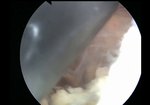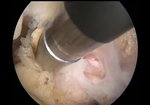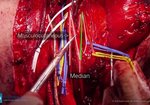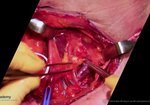Playback speed
10 seconds
Medial Triceps Branch to Axillary Nerve Transfer for Axillary Nerve Palsy
0 views
May 10, 2011
Medial Triceps Branch to Axillary Nerve Transfer - Standard Version. The medial triceps branch to ...
read more ↘ axillary nerve transfer is an available option for reconstructing patients with shoulder deficits that include an axillary nerve injury. Not presented in this tutorial, the accessory to suprascapular nerve transfer is additionally performed to stabilize the humerus during its range-of-motion in these patients. The triceps to axillary nerve transfer specifically innervates the deltoid and teres minor. The superior lateral cutaneous branch of the axillary nerve is provided with rudimentary sensation through an end-to-side nerve transfer to the sensory component of the radial nerve. The surgical approach involves proceeding between the long and lateral head of the triceps brachii on the posterior aspect of the arm. For more information and extended versions of video, please visit our site: nervesurgery.wustl.edu
↖ read less
read more ↘ axillary nerve transfer is an available option for reconstructing patients with shoulder deficits that include an axillary nerve injury. Not presented in this tutorial, the accessory to suprascapular nerve transfer is additionally performed to stabilize the humerus during its range-of-motion in these patients. The triceps to axillary nerve transfer specifically innervates the deltoid and teres minor. The superior lateral cutaneous branch of the axillary nerve is provided with rudimentary sensation through an end-to-side nerve transfer to the sensory component of the radial nerve. The surgical approach involves proceeding between the long and lateral head of the triceps brachii on the posterior aspect of the arm. For more information and extended versions of video, please visit our site: nervesurgery.wustl.edu
↖ read less
Comments 7
Login to view comments.
Click here to Login




